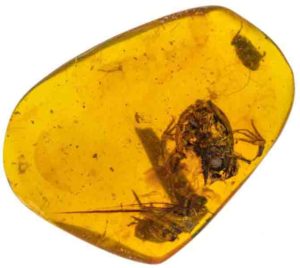
Geologic time scales are critical to understanding the timing, duration, and connection of geologic events. They are not static, and can be improved with research, integration, and refinements realized from biostratigraphic repetitive analysis. Over the past century they have proven important tools in petroleum exploration and studies of climatic and geologic events. Still, many geologists may not know the importance of microfossils to the construction of time scales and biostratigraphy.
Biostratigraphy was first applied by the petroleum industry nearly a century ago in the U.S. Gulf of Mexico (GoM) to help understand the geology of this structurally and stratigraphically complex basin. Nevertheless, only a few industrial time scales have been published for this region. BP conducted a multi-decade microfossil research program (circ. 2000) to produce an integrated planktonic foraminifera and calcareous nannofossil deep-water GoM time scale. This integrated framework was constructed from the heritage time scales of BP (Amoco, Arco) and the analyses of hundreds of GoM wells over several decades.
Today, the culmination of this research is the BP Gulf of Mexico Neogene Astronomically-Tuned Time Scale (BP GNATTS) that spans the past 25 million year record from the Late Oligocene (25.05 million years ago) to recent time. This time scale was primarily calibrated utilizing an orbitally tuned composite section from Ocean Drilling Program Leg 154 on Ceará Rise and provides a stratigraphic resolution (number of events per unit of geologic time) of 144 thousand years. This is approximately double that of published GoM time scales and a fivefold increase over the highest resolution global calcareous microfossil timescales.
The resolution of this time scale has provided a valuable aid in seismic correlations between GoM mini-basins. When applied and integrated with geological and geophysical data it has helped reveal subsurface details through detection of unconformities (missing time), sediment redeposition, slumps, faults, and sand to sand correlation.
The BP GNATTS has been successfully tested outside of the GoM in the Mediterranean Sea, and with a resolution comparable to eccentricity (~120 thousand years), it lends itself as a possible tool for better calibration of global records of sea level and paleoclimatic events. One of the most compelling results of this work is best illuminated in the paper’s final sentence. “Results presented here lend conviction to the promise that microfossil biostratigraphy is far from the end of its constructive growth, rather it is a discipline with great current utility and with a realistic expectation for developing new and exciting applications.”
Reference:
J.A. Bergen, S. Truax III, E. de Kaenel, S. Blair, E. Browning, J. Lundquist, T. Boesiger, M. Bolivar, K. Clark. BP Gulf of Mexico Neogene Astronomically-tuned Time Scale (BP GNATTS). GSA Bulletin, 2019; DOI: 10.1130/B35062.1
Note: The above post is reprinted from materials provided by Geological Society of America.










